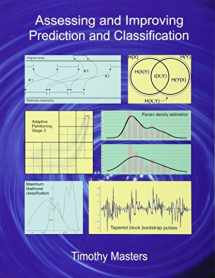
Assessing and Improving Prediction and Classification
Book details
Summary
Description
This book begins by presenting methods for performing practical, real-life assessment of the performance of prediction and classification models. It then goes on to discuss techniques for improving the performance of such models by intelligent resampling of training/testing data, combining multiple models into sophisticated committees, and making use of exogenous information to dynamically choose modeling methodologies. Rigorous statistical techniques for computing confidence in predictions and decisions receive extensive treatment. Finally, a hundred pages are devoted to the use of information theory in evaluating and selecting useful predictors. Special attention is paid to Schreiber's Information Transfer, a recent generalization of Grainger Causality. Well commented C++ code is given for every algorithm and technique. The ultimate purpose of this text is three-fold. The first goal is to open the eyes of serious developers to some of the hidden pitfalls that lurk in the model development process. The second is to provide broad exposure for some of the most powerful model enhancement algorithms that have emerged from academia in the last two decades, while not bogging down readers in cryptic mathematical theory. Finally, this text should provide the reader with a toolbox of ready-to-use C++ code that can be easily incorporated into his or her existing programs.


We would LOVE it if you could help us and other readers by reviewing the book
Book review



